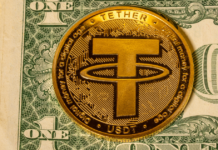The demand for stablecoins has been constantly growing in the crypto ecosystem. If cryptocurrencies have to be used as mode of payment, price stability would be the most important parameter. This is where stablecoins like Tether come into picture.
Stablecoins have been created to replicate the role of fiat currencies built on blockchain. Stablecoins derive their value from the underlying collateral. Depending on the underlying collateral asset, stablecoins are of various types:
Types of Stablecoins:
Fiat Collateralized
These are backed by a fiat currency like USD, EUR, GBP, etc. For every single stable coin that is minted, it needs collateral of 1 underlying fiat currency in the bank account. So if you mint 100,000 stablecoins pegged to the USD, you need 100,000 USD in the bank account.
Example: Tether (USDT), TrueUSD (TUSD), USDCoin (USDC), Paxos Standard (PAX), Gemini Dollar (GUSD), LBXPeg, etc.



Commodity Collateralized
These are backed by interchangeable assets. Common assets are metals like Gold and Silver, Oil, etc. Each coin is backed by an equivalent quantity of an asset.
Example: Digix Gold (DGX) – 1GDX = 1 gram of gold. This gold is stored in Singapore and is audited quarterly. Tiberius Coin (TCX) – Each coin is backed by a combination of 7 precious metals. Swiss Real Coin (SRC) –Each coin is backed by real estate.

Crypto Collateralized
These are backed by cryptocurrencies as having crypto as collateral for creating another cryptocurrencies make them more decentralized and in order to create stability in the price of these coins, they are collateralized by more than its value. Example: $1 worth of stablecoin is backed by $1.5 or $2 worth of Ether.
Example: DAI
Non-Collateralized
The price of non-collateralized stablecoins depends upon an underlying algorithm. They are truly decentralized coins as the price is independent of any other asset. The model uses an elastic approach. As the price goes up, the supply increases, thereby increasing sellers and reduction in price and as price goes down, supply reduces, thereby decreasing sellers and increase in price.
Example: Ampleforth (AMPL), Basis.

The current marketcap of stablecoins is in billions of dollars. USDT and USDC are the more widely used ones and the daily volume of USDT is second to BTC on most days.
Join us on Telegram to receive free trading signals.
For more information on cryptocurrency, visit the Altcoin Buzz YouTube channel.
































